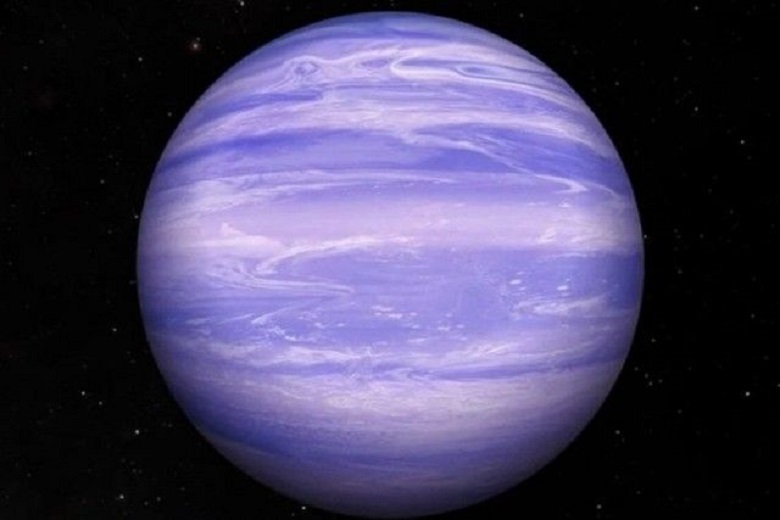For a few weeks in the summer of 2020, if you had looked up on a clear night, you may have spotted a rare visitor to our part of the solar system. Through binoculars, it was shaped like a classical comet – a glowing core and a long tail formed from ice turned into a gas by the Sun’s heat. It could even be seen with the naked eye in the northern hemisphere in early July. But then it disappeared.
None of those who have seen this comet – dubbed C/2002 F3 (Neowise) – will ever see it again. Nor their children. Not even several generations after the children of their children. This particular comet is not expected to be seen again for 6,800 years.
However, its brief stint was remarkable for other reasons than the time it will take to return (many short-lived comets visit our skies multiple times in a person’s lifetime). C/2002 F3 (Neowise) is believed to come from one of the least explored and mysterious parts of our solar system: the vast and icy cloud of Oort. It is found at the far ends of the solar system, beyond the asteroid belt and gas giants, beyond the icy worlds of Uranus and Neptune, and even well beyond the distant orbit of Pluto.
It is even found beyond the outer edge of the heliosphere, the plasma bubble projected by our Sun that envelops our solar system and marks the beginning of interstellar space.
Like a huge shell, the Oort Cloud encompasses our solar system – not just along the plane where planets, asteroids, and dwarf planets are located, but in all directions. The only problem is, we can’t be totally sure that this huge ice dome is really there. Astronomers have never seen the Oort Cloud directly, and the most distant spacecraft ever launched by mankind – Voyager 1 – is not expected to visit it for 300 years. But new research and upcoming space missions are starting to reveal some of its secrets. Visits from distant comets like C / 2002 F3 (Neowise) also provide some clues.
Jan Oort predicted the Oort cloud in 1950 to explain the existence of comets like Neowise. Unlike short-period comets, which typically take less than 200 years to revolve around the Sun and originate from an icy disc beyond Neptune known as the Kuiper Belt, the origin of comets with much longer orbits was more difficult to explain.
Most long-lived comets take between 200 and 1,000 years to orbit the Sun. They also have eccentric orbits, approaching very close to the Sun and then moving away from it very far. Oort hypothesized that these comets could have originated from a shell of distant objects, composed mostly of rock and ice, located far beyond the limits of our solar system. This enormous shell of objects is thought to begin somewhere between 306 billion km (190 billion miles) and 756 billion km (470 billion miles) from the Sun.
This is equivalent to 2,000 to 5,000 times the distance between Earth and the Sun (a distance of 93 million miles (150 million km), called an astronomical unit (AU)) or 0.03 to 0.08 light-years. According to some estimates, the cloud would then extend in space up to 100,000-200,000 AU (15,000 billion km), or between 15,000 and 29,000 billion km. “So far, we have no other satisfactory explanation for the continuous supply of long-lived comets that we are observing,” says Cyrielle Opitom, who studies comets and the solar system at the University of Edinburgh. “As they reconstruct their obits, they appear to share an aphelia – the farthest distance from the sun – about 20,000 times the distance from the sun to Earth, in what we call the Oort Cloud.”
Origin of this cloud remains a mystery
It could contain hundreds of billions, if not trillions, of rocky planetesimals – solid chunks of rock or ice, similar to comets, which are often the building blocks of planets. But these objects, which vary in diameter from a few kilometers to a few tens of kilometers, are too small to be seen directly from Earth, even with our most powerful telescopes. However, a recent study has shed some light on what it took for the Oort cloud to form.
Simon Portegies Zwart and his colleagues at the University of Leiden in the Netherlands used a series of computer simulations to study how the cloud formed, in chronological order, over 100 million years. This is the first study to link all stages of cloud formation instead of looking at them separately. The results show that the cloud “was not formed in a simple way, but by some kind of conspiracy of nature, where a number of processes have to follow each other,” says Portegies Zwart.
Planets, stars, and the Milky Way all played a role in its formation, he says. “The complication of the process surprised me.” But the results mean that our solar system is unlikely to be the only one enveloped by a vast icy cloud. “Once we mapped out the different processes, they turned out to be a rather natural consequence of the evolution of the solar system,” says Portegies Zwart.
Their work also made it possible to predict what the Oort cloud might contain. If these predictions are correct, the Oort cloud could contain material foreign to our solar system: “stuff from other stars,” says Portegies Zwart.
The idea that our Sun might have stolen matter elsewhere was first put forward about ten years ago. “In the star cluster that gave birth to the Sun, the sister stars would have been tight enough for their comet clouds to overlap and tangle,” says Michele Bannister, a planetary astronomer at the University of Canterbury in Nova Scotia, Zeeland.
